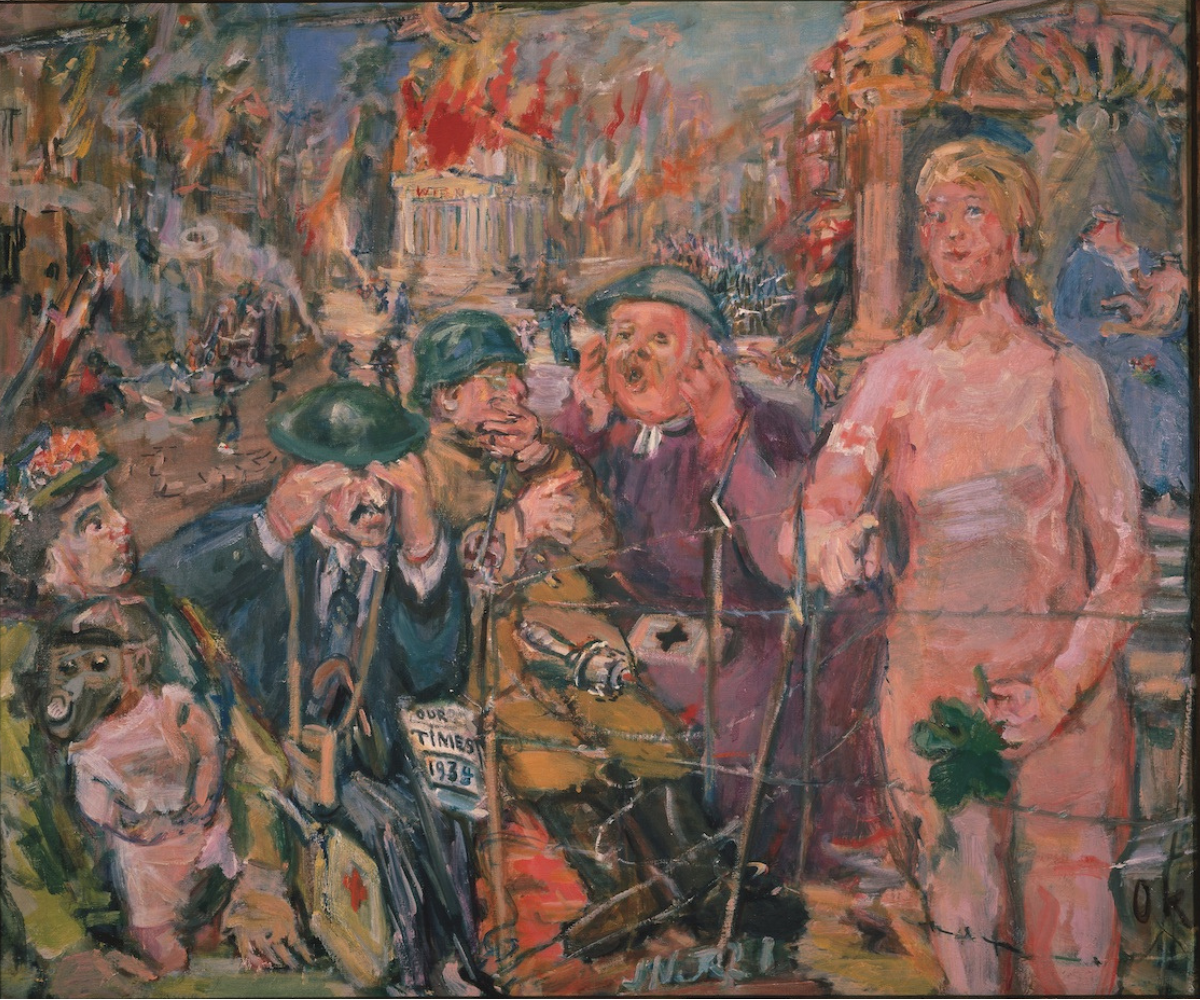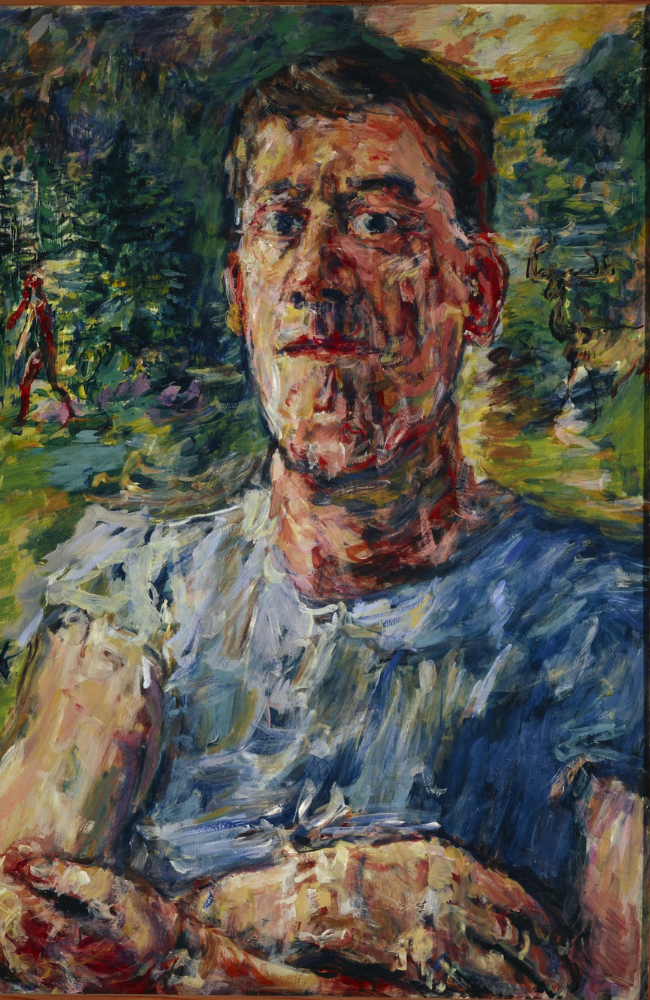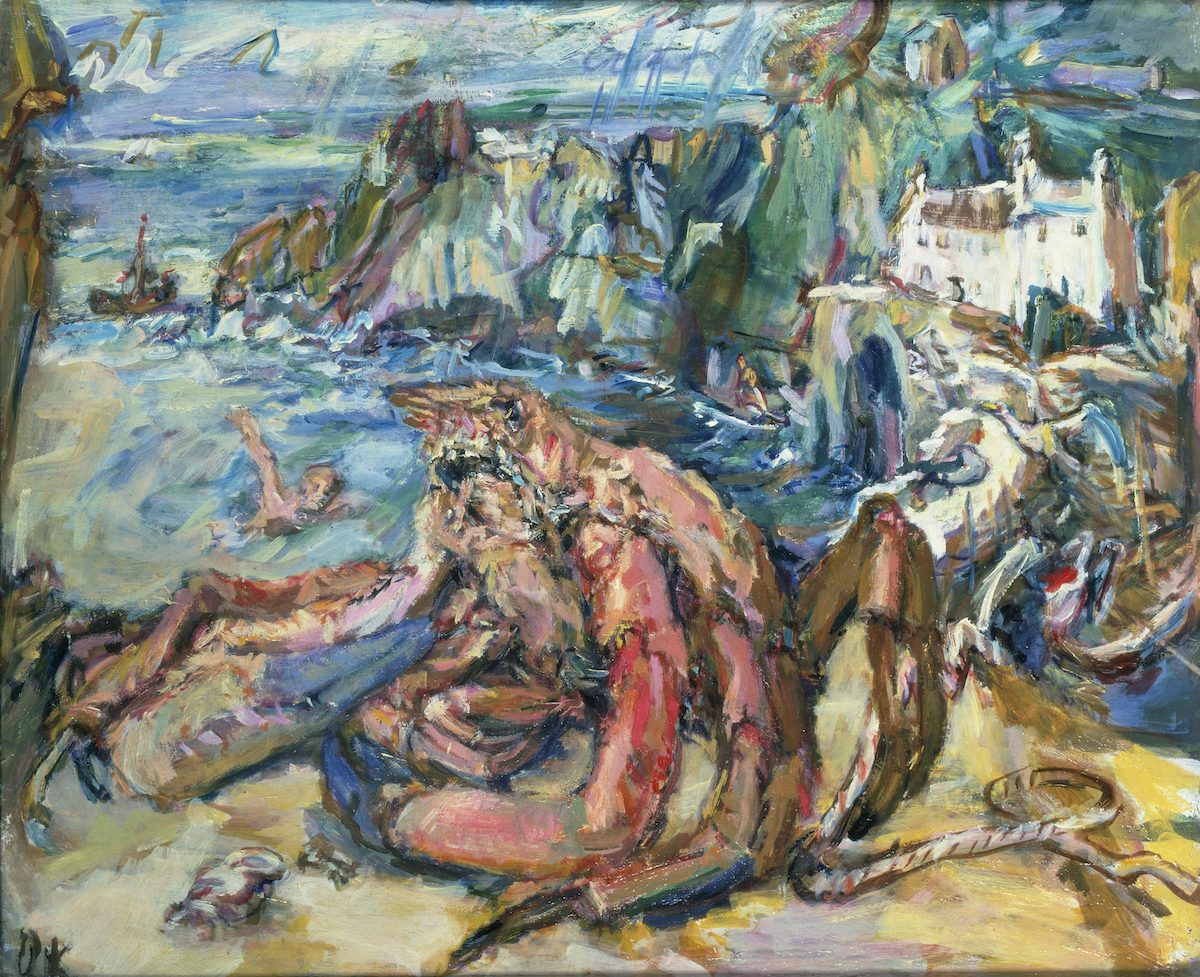This wonderful Cornish workshop and museum is dedicated to the legacy of studio pottery trailblazer Bernard Leach
Become an instant expert on the artist Oskar Kokoschka
Become an instant expert on the artist Oskar Kokoschka
10 Aug 2023
Artist, rebel, pacifist: Oskar Kokoschka’s story is explored in a show at the Guggenheim in Bilbao. Its co-curators, Dr Anna Karina Hofbauer and Dr Dieter Buchhart, reveal key things to know about his story
 Anschluss – Alice in Wonderland, 1942. Image: Vienna Insurance Group, on permanent loan to Leopold Museum, Vienna © Fondation Oskar Kokoschka, 2023, VEGAP, Madrid
Anschluss – Alice in Wonderland, 1942. Image: Vienna Insurance Group, on permanent loan to Leopold Museum, Vienna © Fondation Oskar Kokoschka, 2023, VEGAP, Madrid
Who was Oskar Kokoschka?
A painter, poet, writer, essayist and playwright, Oskar Kokoschka (1886–1980) began his career in the Viennese art scene alongside Gustav Klimt and Egon Schiele. His first works shocked audiences, earning him the nickname Oberwildling – ‘the wildest of them all’.
Kokoschka did not associate with any artistic movement, although accepted one epithet, that of an Expressionist, saying: ‘I am an Expressionist because I do not know how to do anything other than express life.’
When and why did his art first gain notice?
With his 1908 debut at the Vienna Art Show, Kokoschka was also proclaimed ‘enfant terrible’. The prominent architect, writer and critic Adolf Loos was a key supporter, and through him Kokoschka received society portrait commissions and his work earned him a soaring reputation.
Why was he known as a painter of souls?
In such commissions, Kokoschka managed to bring the inner state of his subjects to the surface and used the new language of Modernism to capture their psyche. Those early paintings were executed in a rapid, immediate style, with parts of the body sometimes only sketched in, with sparing application of paint, undirected brushstrokes, finger painting and scratch marks.
When he created his 1917 Self-Portrait, his allusion to his soul’s despair (caused by traumatic war experiences) comes to life through coarse brushwork that suggests the dissolution of the face, hands and body.
 Self-Portrait of a ‘Degenerate Artist’, 1937. Image: National Galleries of Scotland, on loan from a private collection © Fondation Oskar Kokoschka, 2023, VEGAP, Madrid
Self-Portrait of a ‘Degenerate Artist’, 1937. Image: National Galleries of Scotland, on loan from a private collection © Fondation Oskar Kokoschka, 2023, VEGAP, Madrid
How did Kokoschka use his pacifism?
Radical from the start, Kokoschka became a target for the Nazis, who considered him a representative of ‘degenerate art’. He fought against Fascism, becoming an influential figure for European reconciliation after World War II and actively participating in the cultural reconstruction of a devastated continent.
In 1936, as a member of a Czechoslovak delegation at the World Peace Congress in Brussels, he spoke out against political violence in a speech directed at Fascism. A year later, 417 of his works were confiscated from German public collections.
He reacted with his masterly 1937 Self-Portrait of a ‘Degenerate Artist’ (seen above). He published numerous articles, organised conferences to alert people to danger and countered the ‘threatened paradise’ with allegorical paintings; he wanted to ‘open the eyes of others to how I saw the war’.
One such painting is his menacing 1939–40 work, The Crab (below). He also participated in the formation of a ‘People’s Front’ of anti-Fascists and entered into direct confrontation with the National Socialists.
 The Crab, 1939–40. Image: Tate, acquisition 1984 © Fondation Oskar Kokoschka, 2023, VEGAP, Madrid
The Crab, 1939–40. Image: Tate, acquisition 1984 © Fondation Oskar Kokoschka, 2023, VEGAP, Madrid
Is his work still considered revolutionary?
Kokoschka’s unconventional and expressive painting technique, along with his political engagement, were innovative for his time. Part of his legacy includes his School of Vision, opened in 1953 in Salzburg. He wanted to teach his students ‘the art of vision’, reviving humanist ideals. The oldest of its kind in Europe, it still exists as the Salzburg International Summer Academy of Fine Arts.
Kokoschka’s late works show a pictorial extremism, close to his early output, with an uncompromising urgency that influenced a new generation of painters. His belief in the subversive power of painting, a vehicle for emancipation and education, remained steadfast until his death. His work still inspires artists such as Georg Baselitz and David Lynch, who went to Salzburg just to attend the academy Kokoschka founded.
See
Oskar Kokoschka: A Rebel From Vienna until 3 September at the Guggenheim, Bilbao, Spain; guggenheim-bilbao.eus
Explore an art story every month with The Arts Society’s ‘Instant Expert’ email; sign up at theartssociety.org/signup
About the Author
Curators Dr Anna Karina Hofbauer and Dr Dieter Buchhart
are co-curators of Oskar Kokoschka: A Rebel From Vienna
JOIN OUR MAILING LIST
Become an instant expert!
Find out more about the arts by becoming a Supporter of The Arts Society.
For just £20 a year you will receive invitations to exclusive member events and courses, special offers and concessions, our regular newsletter and our beautiful arts magazine, full of news, views, events and artist profiles.
FIND YOUR NEAREST SOCIETY
MORE FEATURES
Ever wanted to write a crime novel? As Britain’s annual crime writing festival opens, we uncover some top leads
It’s just 10 days until the Summer Olympic Games open in Paris. To mark the moment, Simon Inglis reveals how art and design play a key part in this, the world’s most spectacular multi-sport competition



